What can you find on this floor?
- (513) Digital Electronics
- (517) HEP Mechanical Workshops
- (527) Flexi lab
- (537) Electronics Laboratory
- (540) Hyper-K Laboratory
The digital lab is the hub for the electronics design, development and testing of the detectors that the High Energy Physics group develops which are used all over the world. The group has strong expertise in a range of areas, including custom electronics hosting state-of-the-art Field Programmable Gate Arrays (FPGAs) and Application Specific Integrated Circuits (ASICs). The systems designed and built here have been used in cutting-edge experiments in Japan, the USA and at CERN in Switzerland. In addition to the design and development of electronics, the group works on the sophisticated algorithms which are run in the hardware, termed firmware, increasingly using high-performance Artificial Intelligence algorithms. The lab also hosts interdisciplinary project students working on algorithm acceleration under the purview of the Imperial College Centre for High-throughput Digital Electronics and Embedded Machine Learning.
Current developments is focused on the Serenity Project .
How does it work?
The lab is stocked with all the tools necessary for designing, prototyping and testing electronics and electronic systems: microscopes, oscilloscopes, power-supplies, etc. And for its role as a hub for algorithm development and hardware acceleration, it is equipped with a communal area and whiteboard to encourage and enable design discussion.
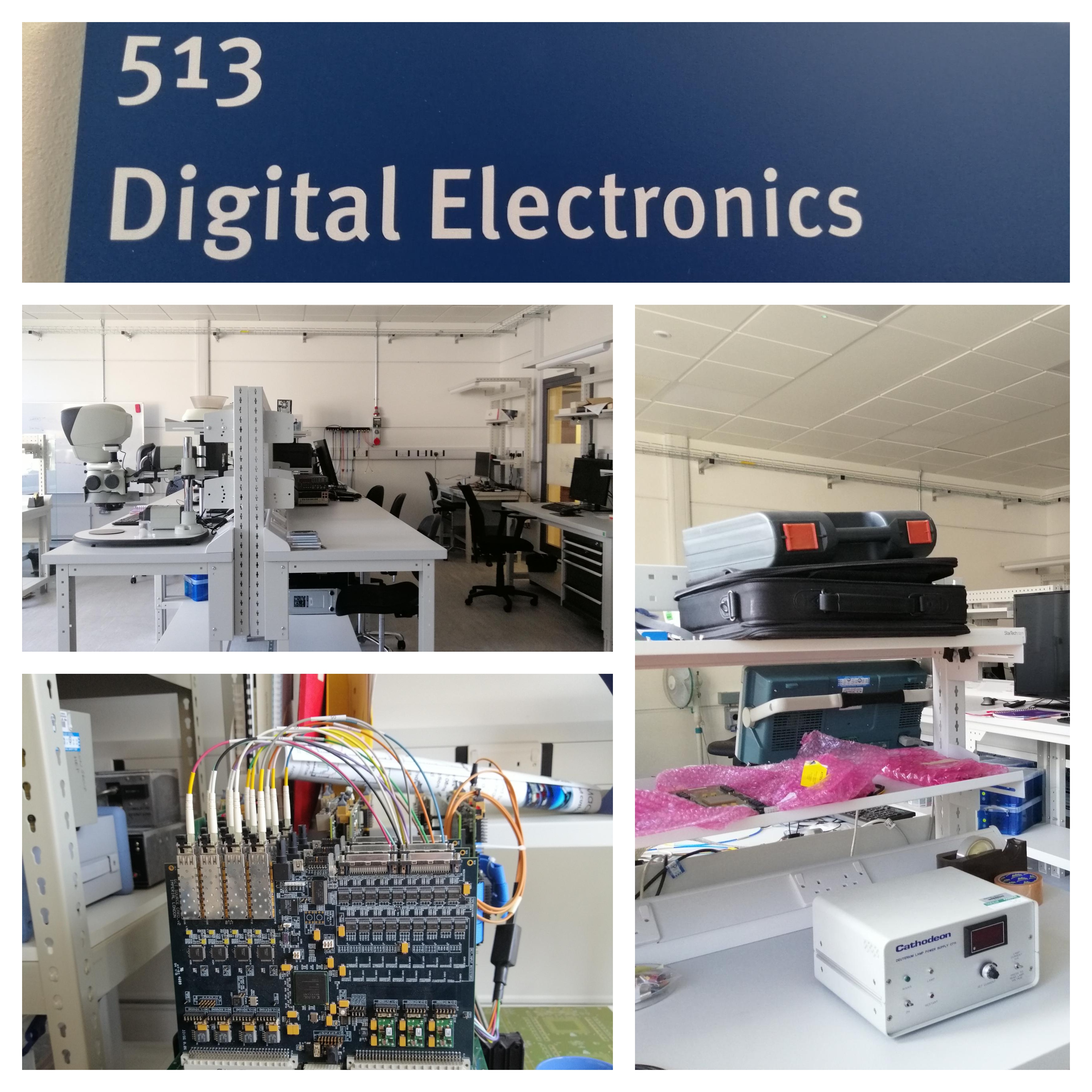
The images show a number of source cards, originally developed for the CMS experiment at CERN and now used as utility cards for test data generation.
Contacts: Kevin Ladhams, HEP Workshop Supervisor
Daniel Nardini, HEP Workshop Technician
Christopher Bird, HEP Workshop Technician
The workshop's main function is to support research in High Energy Physics. Working closely with academics and the HEP design team, the workshop produces prototypes, which then turn into the final manufacture of multiple experiments. Experimental equipment made in the workshop is then used in multiple locations, either on-site here at Imperial College London or in external research locations in the UK and around the world, a few places are Rutherford Appleton Laboratories in Oxford UK, J-Parc in Japan and CERN (Large Hadron Collider) in Geneva. The workshop uses multiple machines and materials, the machines include a feeler CNC milling machine, a HAAS CNC milling machine, some manual milling machines, manual lathes, manual pillar drills and an Ultimaker 3D Printer.
The workshop is used also to assemble the experimental equipment, where usually our staff will travel to the other locations to ensure a smooth installation.
.jpg)

This facility provides the space and equipment for the HEP group detector R&D. The shared space and flexible set-up enables researchers of the group to assemble large mechanical projects, test new detecting material and devices, optoelectronics sensors and integration of various mechanical and electronic systems.
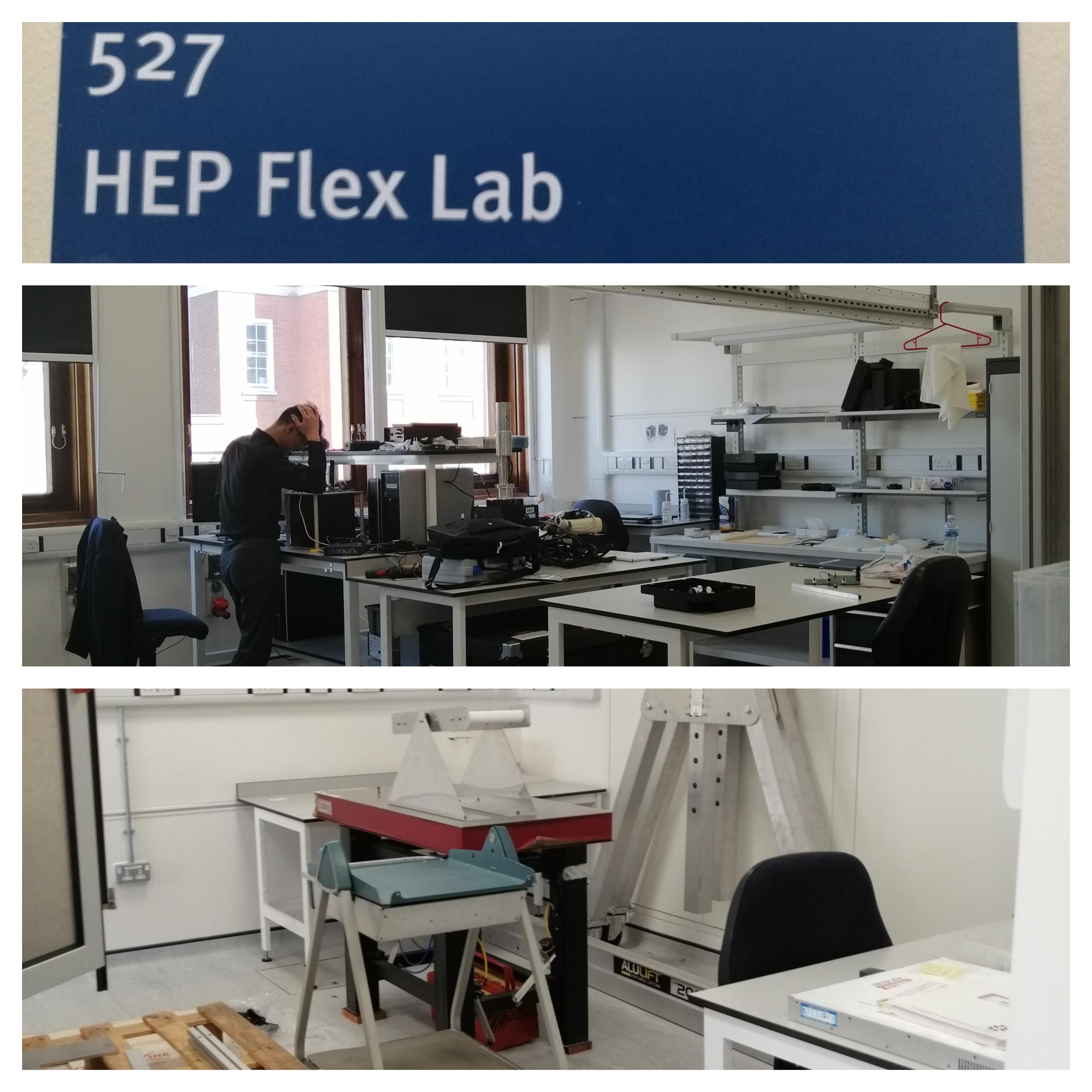
In this space, our people test silicon wafers that have been developed for experiments at CERN. There are also electronics PCB assembly facilities.
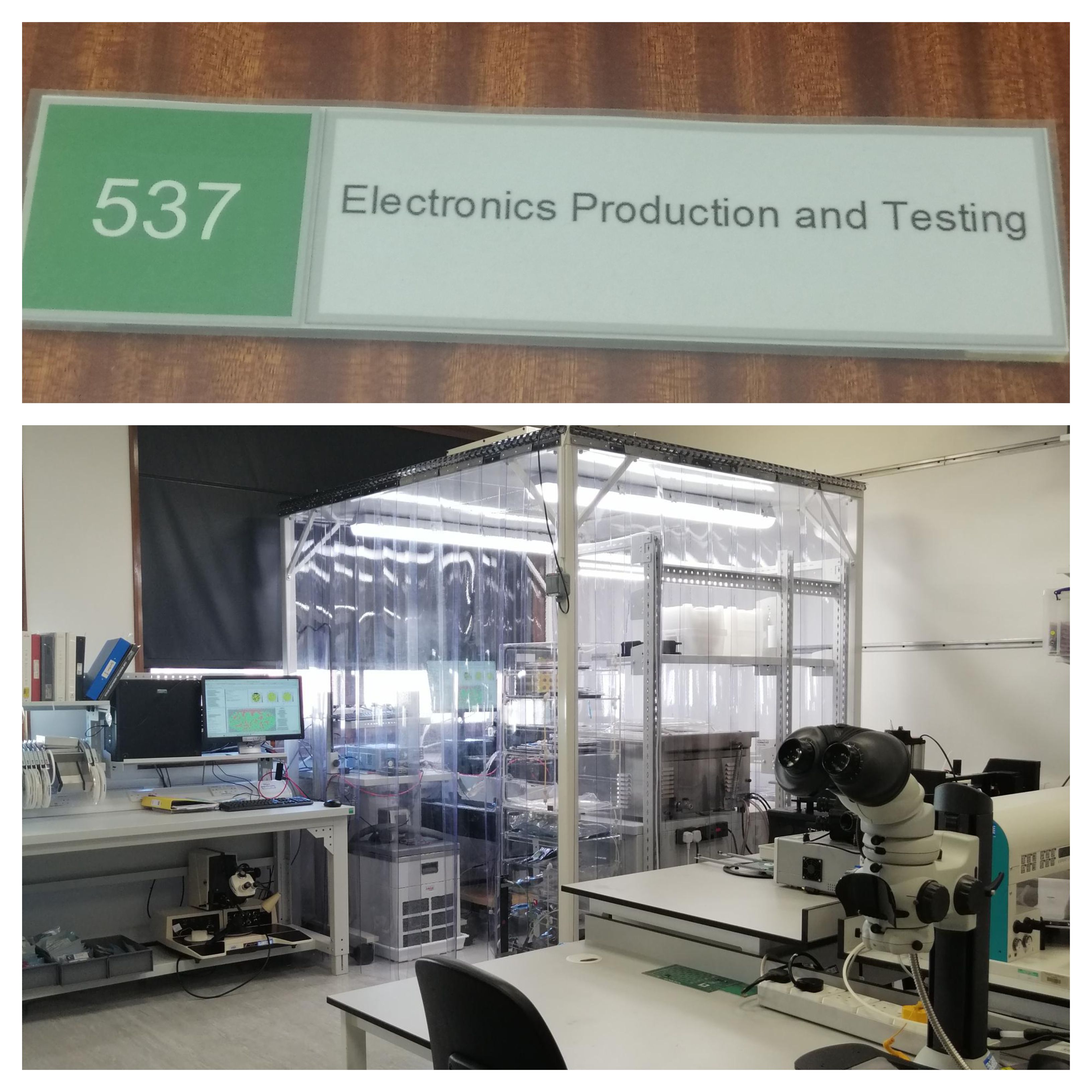
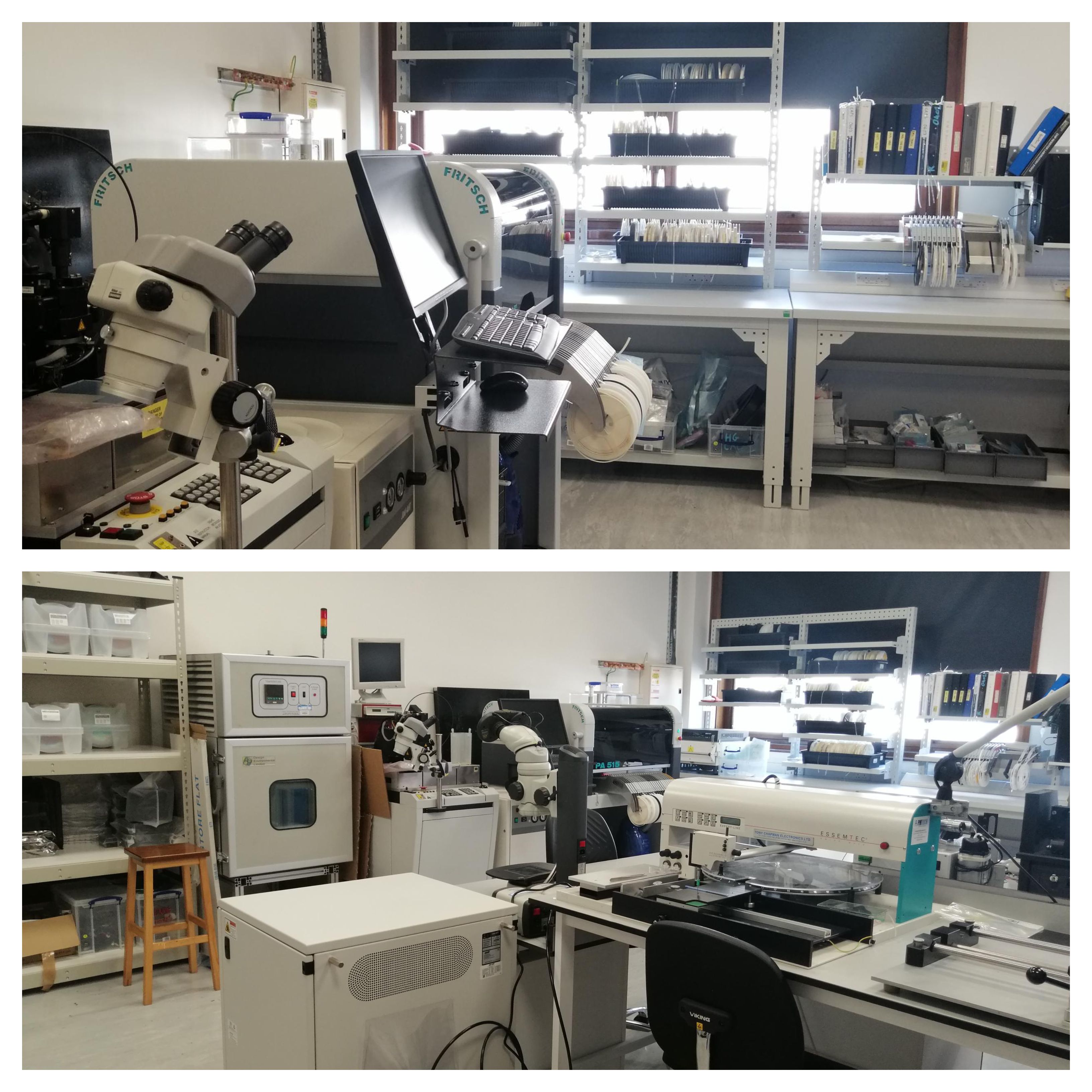
The room is a flexible lab space that is currently occupied by Dr Mark Scott's group. His research team are working to design a calibration system for the Hyper-Kamiokande (HK) experiment.
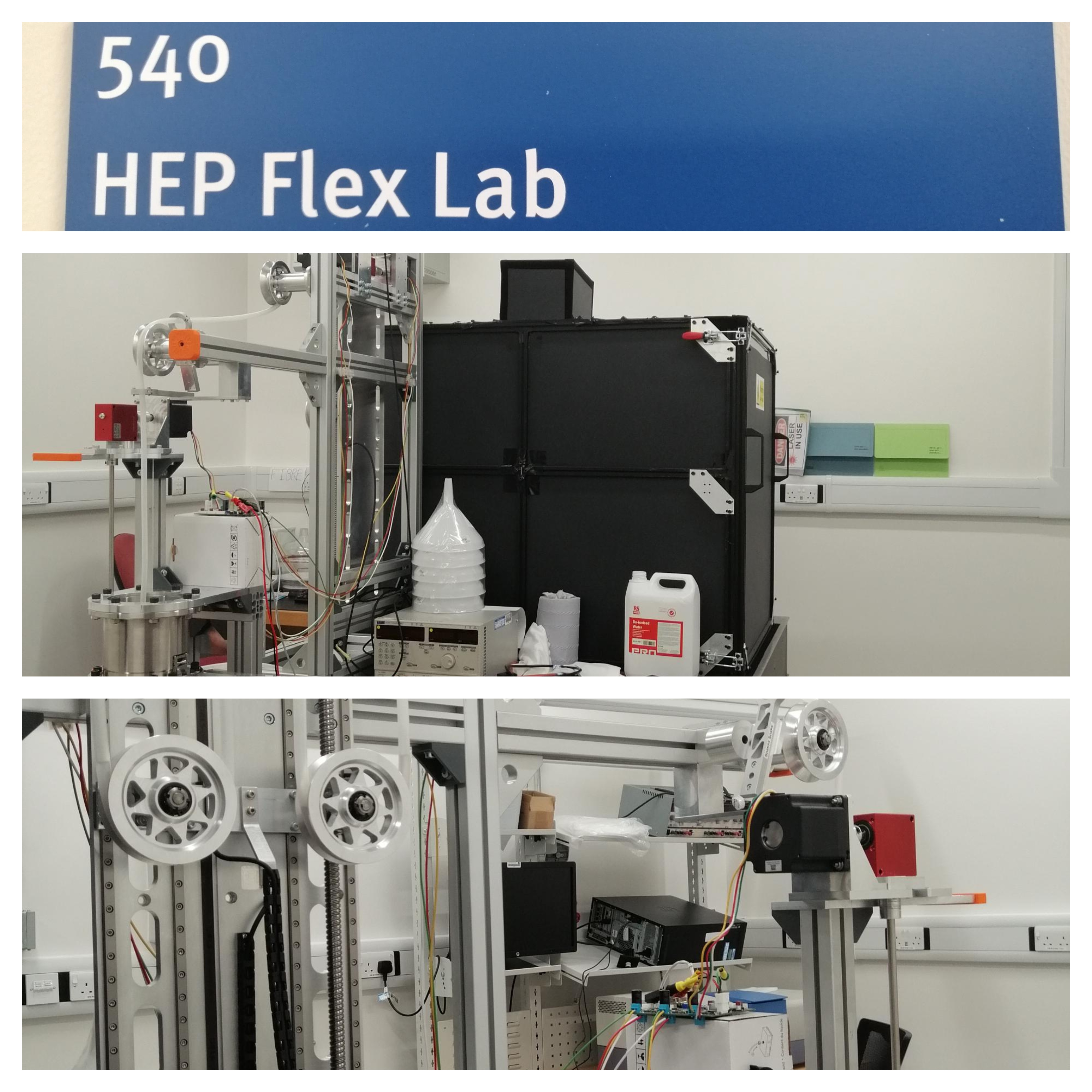
The equipment displayed in the photos will be installed in a test experiment at CERN late next year (2023), the results of which will inform the design of the system that will be installed at HK in 2027.
At the moment, the lab contains:
- a dark box (the black cube): this contains photomultiplier tubes (PMTs) which are sensitive enough to detect individual photons – the box has been designed to exclude as much light as possible while still having feed-throughs for cables and optic fibres. We have a laser system shining sub-nanosecond pulses into a diffuser mounted inside the box and use the PMTs to characterise the spatial uniformity and time structure of the diffuse light. This diffuser and laser is the calibration source we are developing.
- a calibration source deployment system (large aluminium structure that looks a bit like a small crane): is designed to precisely position calibrations sources (such as the diffuser) within a cylindrical water Cherenkov neutrino detector. The arm can be rotated 360 degrees and there is a small “car” seen in the middle of the second photo that moves along the arm and controls the radial position of the source. The vertical frame raises or lowers a cable holding the calibration source, controlling the height at the source sits below the arm.
- a spectrometer: Water Cherenkov detectors use water as a detection medium for neutrinos, which produce Cherenkov light when they interact in the detector. The light has to travel 10s of meters through the water before it is observed and so we need the water to be as pure as possible. All of the components that are placed within the detector must be checked to ensure they do not contaminate the water. The team are using the spectrometer to assess the level of contamination from each material in the diffuser and deployment system in small samples of ultra-pure water